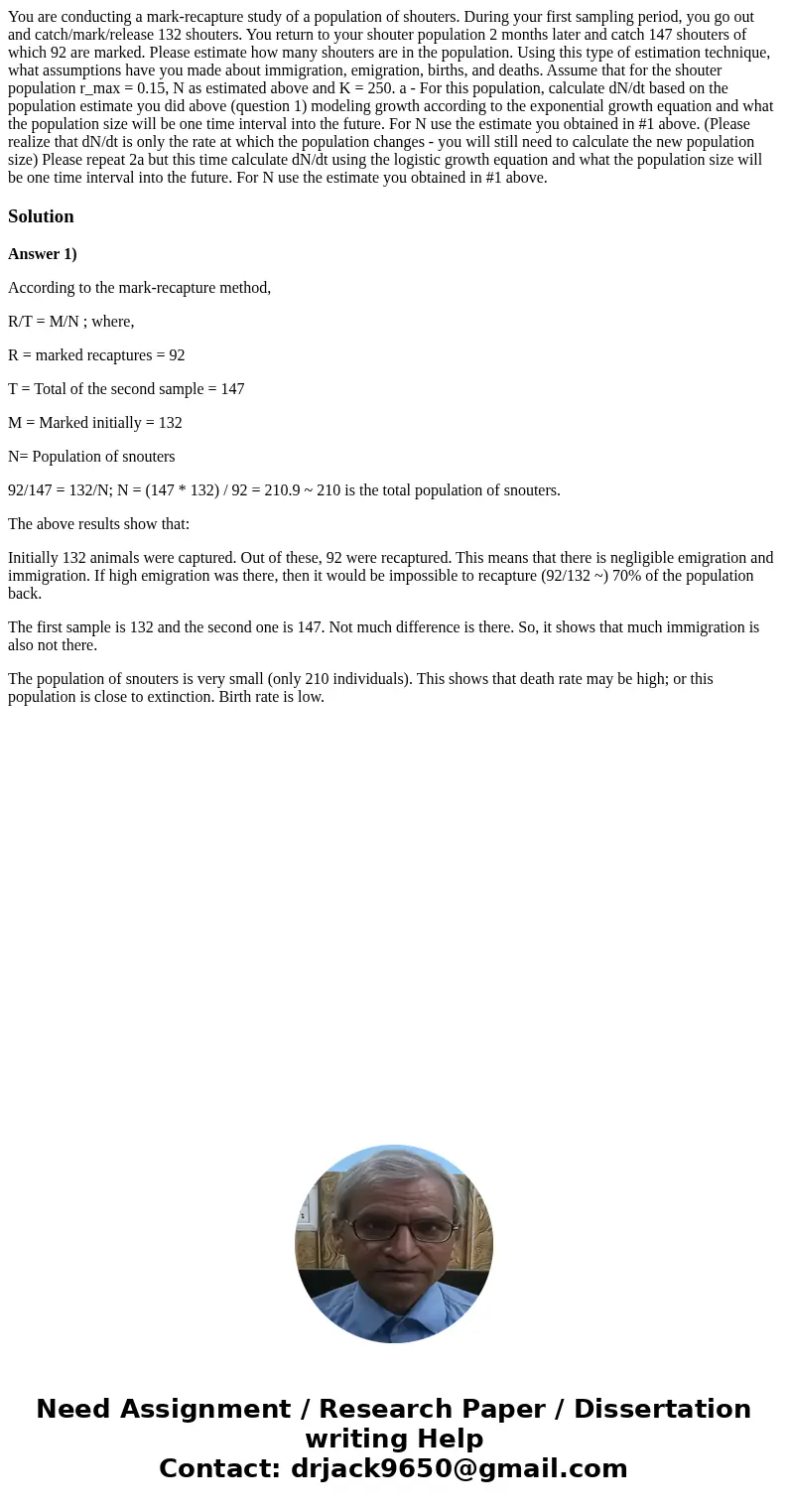You are conducting a mark-recapture study of a population of shouters. During your first sampling period, you go out and catch/mark/release 132 shouters. You return to your shouter population 2 months later and catch 147 shouters of which 92 are marked. Please estimate how many shouters are in the population. Using this type of estimation technique, what assumptions have you made about immigration, emigration, births, and deaths. Assume that for the shouter population r_max = 0.15, N as estimated above and K = 250. a - For this population, calculate dN/dt based on the population estimate you did above (question 1) modeling growth according to the exponential growth equation and what the population size will be one time interval into the future. For N use the estimate you obtained in #1 above. (Please realize that dN/dt is only the rate at which the population changes - you will still need to calculate the new population size) Please repeat 2a but this time calculate dN/dt using the logistic growth equation and what the population size will be one time interval into the future. For N use the estimate you obtained in #1 above.
Answer 1)
According to the mark-recapture method,
R/T = M/N ; where,
R = marked recaptures = 92
T = Total of the second sample = 147
M = Marked initially = 132
N= Population of snouters
92/147 = 132/N; N = (147 * 132) / 92 = 210.9 ~ 210 is the total population of snouters.
The above results show that:
Initially 132 animals were captured. Out of these, 92 were recaptured. This means that there is negligible emigration and immigration. If high emigration was there, then it would be impossible to recapture (92/132 ~) 70% of the population back.
The first sample is 132 and the second one is 147. Not much difference is there. So, it shows that much immigration is also not there.
The population of snouters is very small (only 210 individuals). This shows that death rate may be high; or this population is close to extinction. Birth rate is low.

 Homework Sourse
Homework Sourse